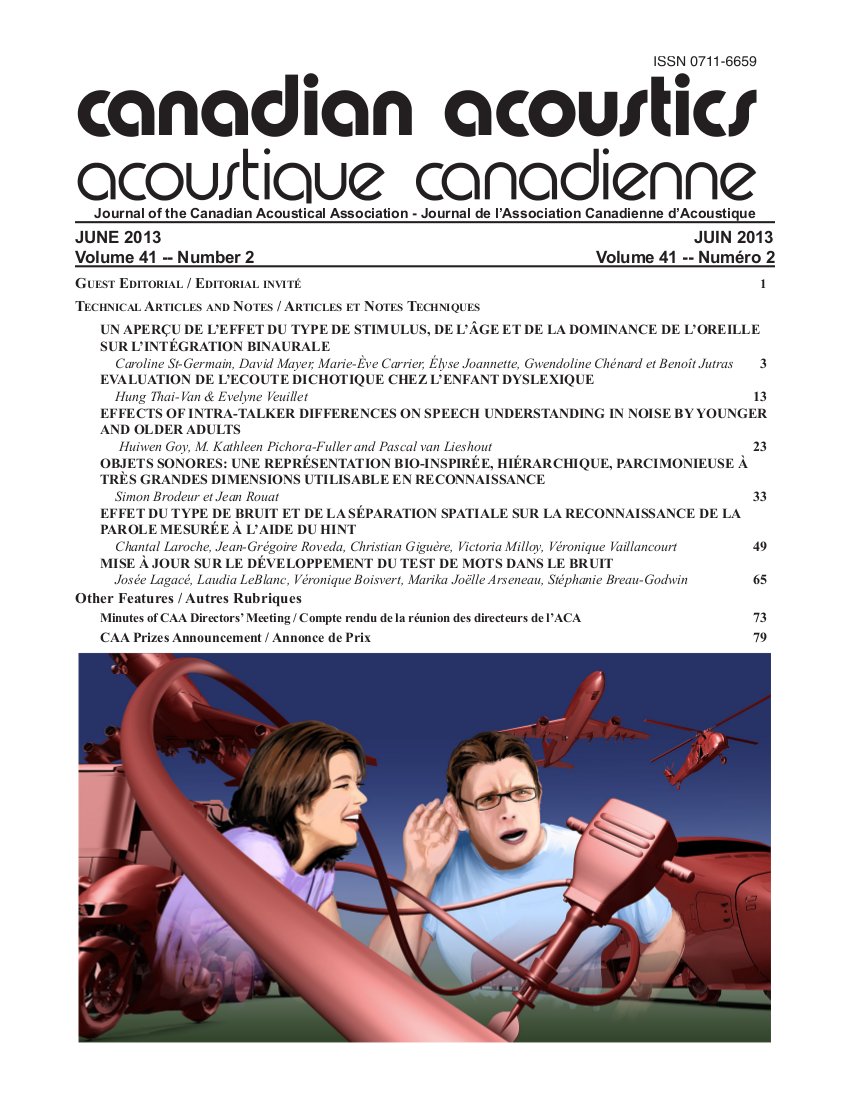Effects of Intra-Talker Differences on Speech Understanding in Noise by Younger and Older Adults
Abstract
The purpose of the study was to investigate the effects on intelligibility when listening to a talker whoproduced speech while being exposed to different types and levels of noise. In addition, we alsoinvestigated how the word identification performance of younger and older listeners for these conditionswas affected in different listening environments. A male young adult talker recorded the SPIN-R test whilelistening to different types and levels of noise and following different speaking instructions. Younger andolder adults with clinically normal hearing from 250 to 3000 Hz were tested on these recordings in threesignal-to-noise ratios. Significant word recognition differences were found between the standard talkingcondition and loud speech recorded in quiet, despite the fact that all sentences were equated for overallintensity. Older listeners found speech produced in noise beneficial when there was more backgroundnoise, but younger listeners did not. Clear speech in this study did not produce any benefit for listenersrelative to the baseline condition. Acoustic analyses showed that intensity fluctuations within the sentencesled to a higher intensity for target words in the loud speech condition relative to all other conditions, whiletarget words in clear speech had a lower fundamental frequency compared to other conditions. Listenerperformance may change on a test of speech intelligibility when speech is produced under moreecologically valid conditions; however, these effects are small and may be more apparent in older adultsand when task difficulty is greater due to lack of contextual support and higher levels of background noise.
Additional Files
Published
How to Cite
Issue
Section
License
Author Licensing Addendum
This Licensing Addendum ("Addendum") is entered into between the undersigned Author(s) and Canadian Acoustics journal published by the Canadian Acoustical Association (hereinafter referred to as the "Publisher"). The Author(s) and the Publisher agree as follows:
-
Retained Rights: The Author(s) retain(s) the following rights:
- The right to reproduce, distribute, and publicly display the Work on the Author's personal website or the website of the Author's institution.
- The right to use the Work in the Author's teaching activities and presentations.
- The right to include the Work in a compilation for the Author's personal use, not for sale.
-
Grant of License: The Author(s) grant(s) to the Publisher a worldwide exclusive license to publish, reproduce, distribute, and display the Work in Canadian Acoustics and any other formats and media deemed appropriate by the Publisher.
-
Attribution: The Publisher agrees to include proper attribution to the Author(s) in all publications and reproductions of the Work.
-
No Conflict: This Addendum is intended to be in harmony with, and not in conflict with, the terms and conditions of the original agreement entered into between the Author(s) and the Publisher.
-
Copyright Clause: Copyright on articles is held by the Author(s). The corresponding Author has the right to grant on behalf of all Authors and does grant on behalf of all Authors, a worldwide exclusive license to the Publisher and its licensees in perpetuity, in all forms, formats, and media (whether known now or created in the future), including but not limited to the rights to publish, reproduce, distribute, display, store, translate, create adaptations, reprints, include within collections, and create summaries, extracts, and/or abstracts of the Contribution.


